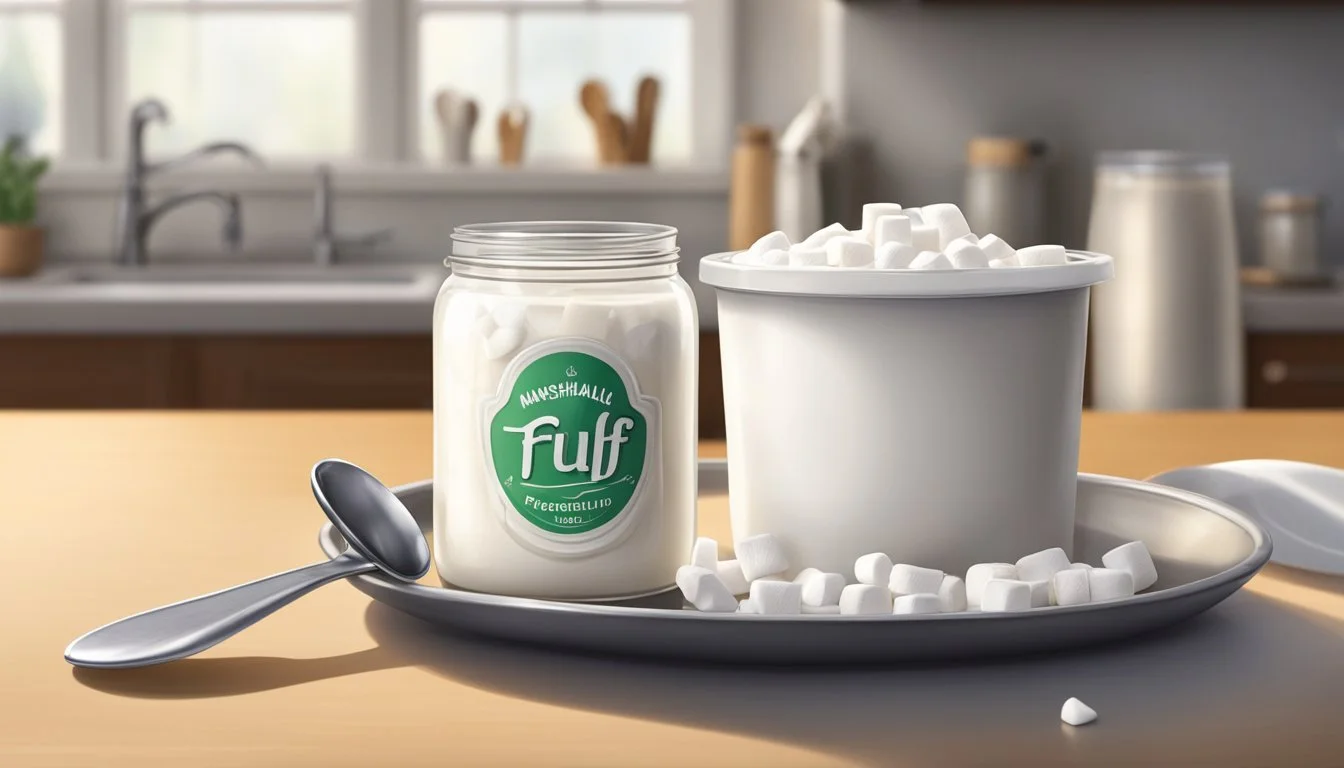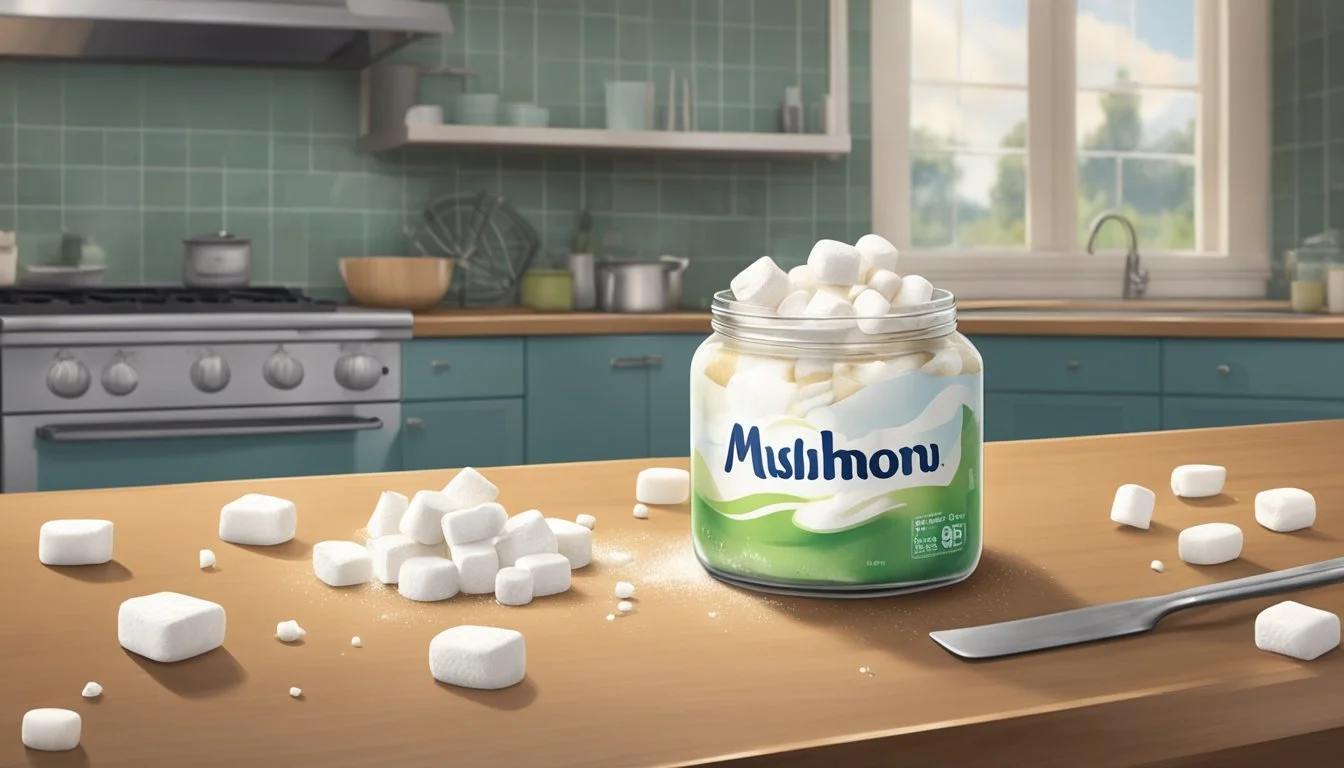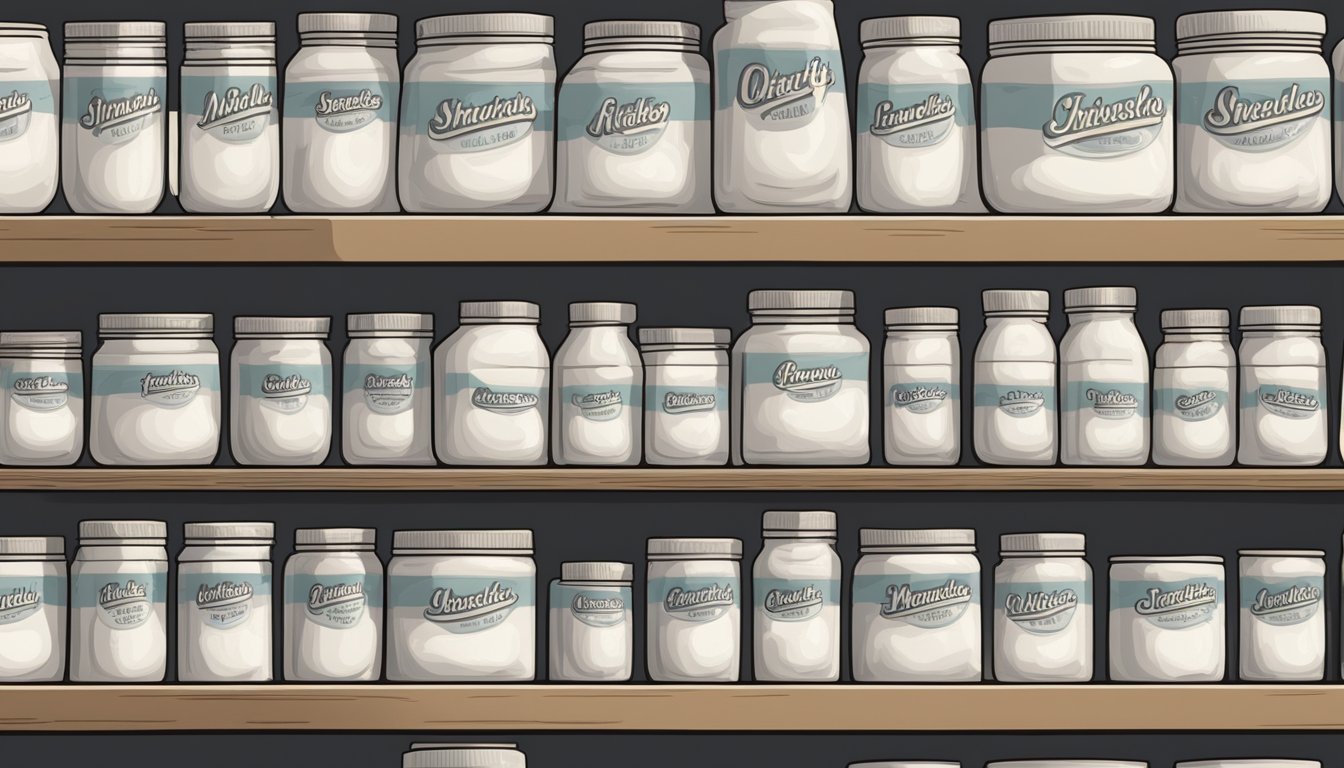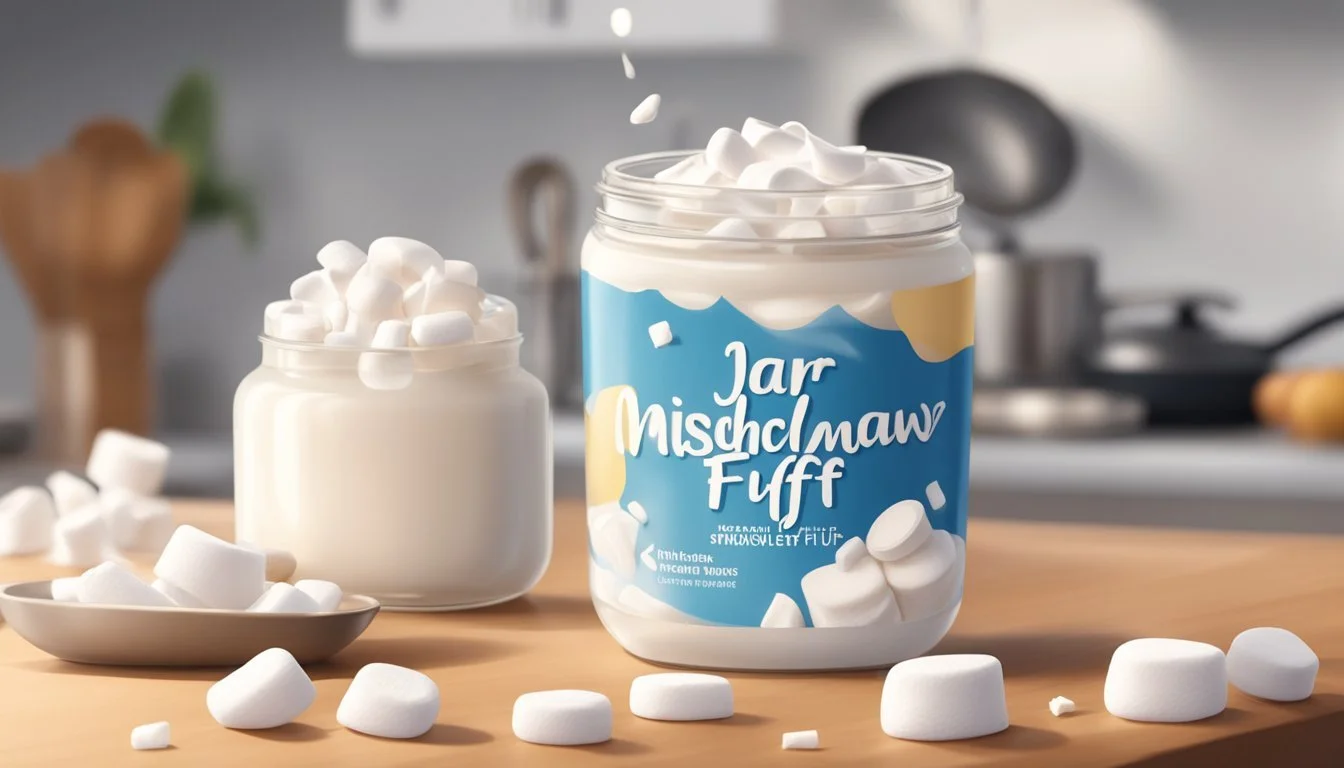Does Marshmallow Fluff Go Bad?
Understanding Shelf Life and Storage
Marshmallow fluff, a sweet spreadable concoction that evokes nostalgia for many, has found its way into a variety of desserts and snacks, from fudge to Fluffernutter sandwiches. However, as with all food products, its longevity and freshness are subjects of concern for consumers looking to maintain both taste and food safety. Marshmallow fluff does have a shelf life, and understanding its expiration process is crucial for those who wish to enjoy it at its best quality.
Upon purchase, a jar of marshmallow fluff typically comes with a best-before date which serves as a guideline for peak quality. If the container remains unopened and is stored properly, it usually remains good for a few months beyond this date. Once opened, the fluff's exposure to air and moisture can accelerate spoilage, necessitating refrigeration to extend its usability for up to two weeks. Any change in color, texture, or smell can be a clear indicator that the marshmallow fluff is no longer at its best and should be discarded.
Understanding Marshmallow Fluff
Marshmallow Fluff, a sugary confection, is a unique spread with a rich history and a specific ingredient composition that has appealed to the sweet tooth of many since its inception.
Ingredients and Composition
Marshmallow Fluff is composed primarily of sugar, corn syrup, and egg whites. These core components are blended together to create its characteristic smooth, gooey texture. Some versions may contain gelatin for added stability, while flavor is introduced to provide its distinct taste. The ingredients come together to deliver the sweet fluffiness that defines this treat.
Marshmallow Fluff: Key Ingredients
Sugar: Essential for sweetness and texture
Corn Syrup: Adds viscosity and stabilizes the sugar to prevent crystallization
Egg Whites: Whipped to create the light and airy texture
Gelatin (optional): Provides firmness and prolongs shelf life
Flavor: Often vanilla, enhancing the overall taste profile
The Appeal of Fluff
The appeal of Marshmallow Fluff lies in its versatility and the joy it brings to a variety of dishes. Its ability to add a sweet touch to everything from sandwiches and desserts to hot beverages makes it a popular item. Consumers enjoy using Fluff as a comforting, nostalgic treat that instantly sweetens up their day.
Historical Context
Marshmallow Fluff owes its existence to Archibald Query, who first sold his version, Toot Sweet Marshmallow Fluff, during World War I. The spread gained popularity rapidly, becoming a beloved household staple. Its affordability and lasting shelf life carried it through tough economic times, ingraining it as a classic American sweet and propelling its fame beyond a mere confection to an iconic edible symbol.
Shelf Life and Storage
Marshmallow fluff's longevity significantly hinges on whether the jar remains sealed and the conditions under which it is stored. These factors together determine the treat's freshness and safe consumption.
Unopened vs. Opened Fluff
Unopened marshmallow fluff usually retains its quality for six months past the expiration date when stored correctly. Once opened, the shelf life shortens drastically, and one should aim to consume it within two weeks.
Ideal Storage Conditions
Proper storage means keeping marshmallow fluff in a dry place away from direct sunlight and heat sources. The original packaging, being an airtight container, is conducive to maintaining its freshness.
Refrigeration and Freezing
After opening, storing marshmallow fluff in the refrigerator is advisable to prolong its quality. Freezing is not recommended, as it can affect the texture and consistency. If one freezes it by choice, thorough thawing is necessary before use.
Identifying Spoilage
When marshmallow fluff goes bad, it exhibits distinctive signs of spoilage through changes in appearance and taste. Consumers should carefully examine their marshmallow fluff for these signs before consumption.
Visual and Textural Changes
Marshmallow fluff should maintain a consistently fluffy texture and bright, whitish color. Spoilage may manifest as discoloration or a change in texture. If the fluff appears yellowish or has dark spots, this is an indicative of spoilage. Moreover, if the once fluffy texture turns liquefied or extremely sticky, the product may be past its prime.
Odor and Taste Deterioration
A fresh jar of marshmallow fluff has a sweet, characteristic smell and flavor. When it spoils, the flavor may significantly diminish or develop an off taste. Consumers should be cautious of any unusual or sour odors, as this is a clear sign the product is no longer safe to eat. If the taste of the marshmallow fluff is not the expected sweet flavor, or if it tastes stale, it should be discarded to avoid consuming spoiled goods.
Safety and Health Considerations
When discussing marshmallow fluff, understanding the health implications of consuming expired products is crucial. Preservatives are present to ensure shelf stability, but they have limits. Consumers must be aware of potential health risks and ways to recognize if fluff is no longer safe to consume.
Risks of Consuming Expired Fluff
The consumption of expired marshmallow fluff can lead to foodborne illness. This product, when past its best-before date, may show signs of deterioration in color and texture. This could indicate the growth of harmful bacteria which poses safety concerns. Food poisoning is a significant risk associated with eating expired food, especially if the product has been improperly stored post-opening, raising the chances of contamination or cross-contamination. Always inspect marshmallow fluff for changes in appearance or odor before use.
Preservatives and Shelf Stability
Marshmallow fluff often contains preservatives that grant it a long shelf life. Preservatives help prevent the growth of microorganisms that can cause spoilage. Typically, unopened marshmallow fluff can remain safe for consumption for several months past its production date if stored in a cool, dry place. Once opened, its quality can be maintained by refrigerating and using a clean utensil to avoid cross-contamination with allergens or other food items. Remember that while preservatives extend the life of marshmallow fluff, the quality of ingredients will degrade over time, emphasizing that the provided expiration dates are there to ensure both safety and optimal taste.
Usage and Enjoyment
Marshmallow fluff serves as a versatile ingredient in various culinary endeavors, enhancing desserts and treats with its unique texture and sweetness. This section explores its applications in cooking and baking, offering a guide to harnessing its full potential.
Culinary Applications
Marshmallow fluff is frequently used as a frosting or topping for a range of desserts due to its creamy consistency and ability to add a light, airy touch. It's an essential component in the making of fudge, where it contributes to the confection's smooth, velvet-like texture. Additionally, it can act as a spread on toast or as a crucial layer in a fluffernutter sandwich, a beloved treat combining marshmallow fluff with peanut butter between slices of bread.
In the realm of ice cream, chefs often incorporate marshmallow fluff to create a rich, indulgent ribbon effect. Its application extends to pies, where it can be used as a fluffy topping, and often appears in cookie recipes, either as a filling or an addition to the dough.
Creative Variations
The transformative nature of marshmallow fluff allows for a variety of creative variations in dessert making. When it's paired with chocolate, it elevates the classic flavor profile, making it a favored substitute for traditional marshmallows in recipes like hot cocoa or s'mores-inspired dishes.
For a twist on standard recipes, cooks sometimes blend marshmallow fluff with flavorings such as vanilla or fruit essences to concoct unique versions of frostings and toppings. It embodies an innovative alternative to simple sugar spreads, offering a textural complexity and a signature sweetness that can transform ordinary treats into memorable ones.
Storage Tips and Tricks
Proper storage is critical to maintain the freshness of marshmallow fluff and prevent spoilage. Keeping marshmallow fluff free from moisture and sealed in an airtight container are key steps to extending its shelf life.
Extending Fluff's Freshness
To prolong the freshness of marshmallow fluff, it should be stored in an airtight container. This prevents the introduction of moisture and air which can degrade the quality of the fluff. After opening, marshmallow fluff is best kept in the refrigerator where it can last for up to two weeks. For those wanting to keep unopened marshmallow fluff, storing it in a cool, dry pantry is sufficient, and this can help it last for approximately six months beyond the manufacturing date.
Refrigerated: Up to 2 weeks once opened, in an airtight container.
Pantry: Up to 6 months past the manufacturing date if unopened and stored in a cool, dry place.
Preventing Mold and Spoilage
Marshmallow fluff contains sugar and egg whites, which can be prone to mold growth if not stored correctly. The key to preventing mold and spoilage is to avoid cross-contamination. One should always use clean utensils when scooping marshmallow fluff out of its container. Additionally, it should be kept away from direct heat or sunlight, as these can accelerate spoilage.
Clean Utensils: Use a clean spoon or knife each time to prevent introducing contaminants.
Cool, Dark Location: Store away from heat and light to minimize the risk of mold and spoilage.
Frequently Asked Questions
The following FAQs address important aspects of marshmallow fluff, including its longevity, storage practices, and safety measures related to consumption.
Product Variations and Shelf Life
Marshmallow fluff exhibits a shelf life that can vary. Unopened jars typically have a durability extending up to six months past the printed manufacturing date. Product variations may result in minor differences in shelf life. It's critical to observe the color and consistency, as alterations may indicate spoilage.
Handling and Storage Queries
For optimal preservation, marshmallow fluff should be stored at room temperature. Once opened, to maintain flavor and prevent degradation, it's advisable to refrigerate the fluff. Though refrigeration isn't mandatory, it extends the product's life. Freezing marshmallow fluff is not generally recommended, as it can affect texture and flavor upon thawing.
Safe Consumption and Precautions
Consuming marshmallow fluff past its best-before date requires caution. A shift in color, typically from white to yellow, could signify that the fluff is no longer suitable for consumption. Ensuring proper food hygiene practices minimizes the risk of food poisoning. If uncertainty about safety arises, it’s safer to discard the product.
Conclusion
Marshmallow fluff has a finite shelf life despite its sugary composition. Consumers should be mindful of the following key points to ensure they enjoy this confection in its prime condition:
Shelf Life: Unopened marshmallow fluff typically remains fresh for about six months past its manufacturing date.
Storage: Upon opening, it should be refrigerated and ideally consumed within two weeks to maintain quality and safety.
Quality Indicators: Discoloration and textural changes are reliable signs that marshmallow fluff may no longer be consumable.
Spoilage: Like all food products, marshmallow fluff can spoil and develop bacteria, making it unsafe to eat.
Proper storage and attentiveness to the product’s condition are crucial to prevent foodborne illness. Marshmallow fluff enthusiasts should always check the expiration date and examine the product before use. If there is any doubt about its condition, it is better to err on the side of caution and discard the fluff.










